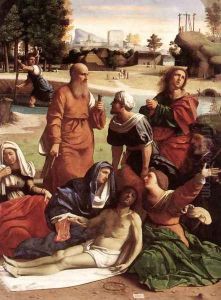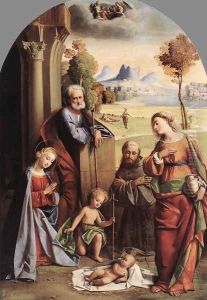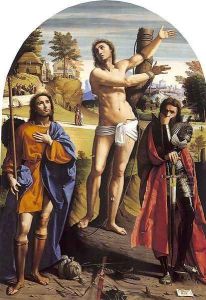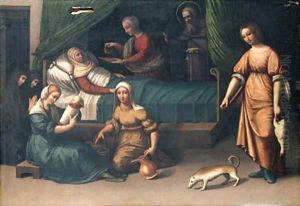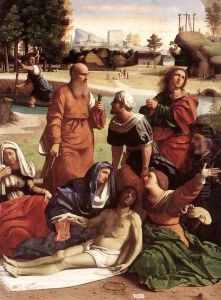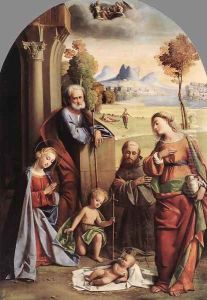Giovanni Battista Benvenuti (see Ortolano) Paintings
Giovanni Battista Benvenuti, known as l'Ortolano or Il Ortolano, was an Italian painter of the Renaissance period, active mainly in Ferrara. Born in 1487, Ortolano was a contemporary of Dosso Dossi and was influenced by the vibrant cultural and artistic environment of Ferrara, a city that was a significant center for the arts during the Renaissance. His nickname, 'Ortolano', meaning 'gardener' in Italian, suggests a family origin or perhaps a personal interest, but the specifics behind this nickname remain a subject of speculation among art historians.
Ortolano's work is characterized by its detailed landscapes, intricate human figures, and a rich, vivid use of color. He was deeply influenced by the works of Raphael and Garofalo, incorporating elements of their styles into his own. Ortolano is best known for his religious compositions, which often featured intense, emotional scenes drawn from the Bible and the lives of the saints. His paintings are notable for their detailed natural elements and the delicate portrayal of light, attributes that have drawn comparisons with the works of Leonardo da Vinci.
Despite his talent and the quality of his work, Ortolano's career was relatively short, and his oeuvre is limited. He died in 1525, leaving behind a small but significant body of work that continues to be studied and admired for its contribution to the Italian Renaissance. Today, Ortolano's paintings can be found in several major museums and collections around the world, where they are celebrated for their beauty and historical value.
